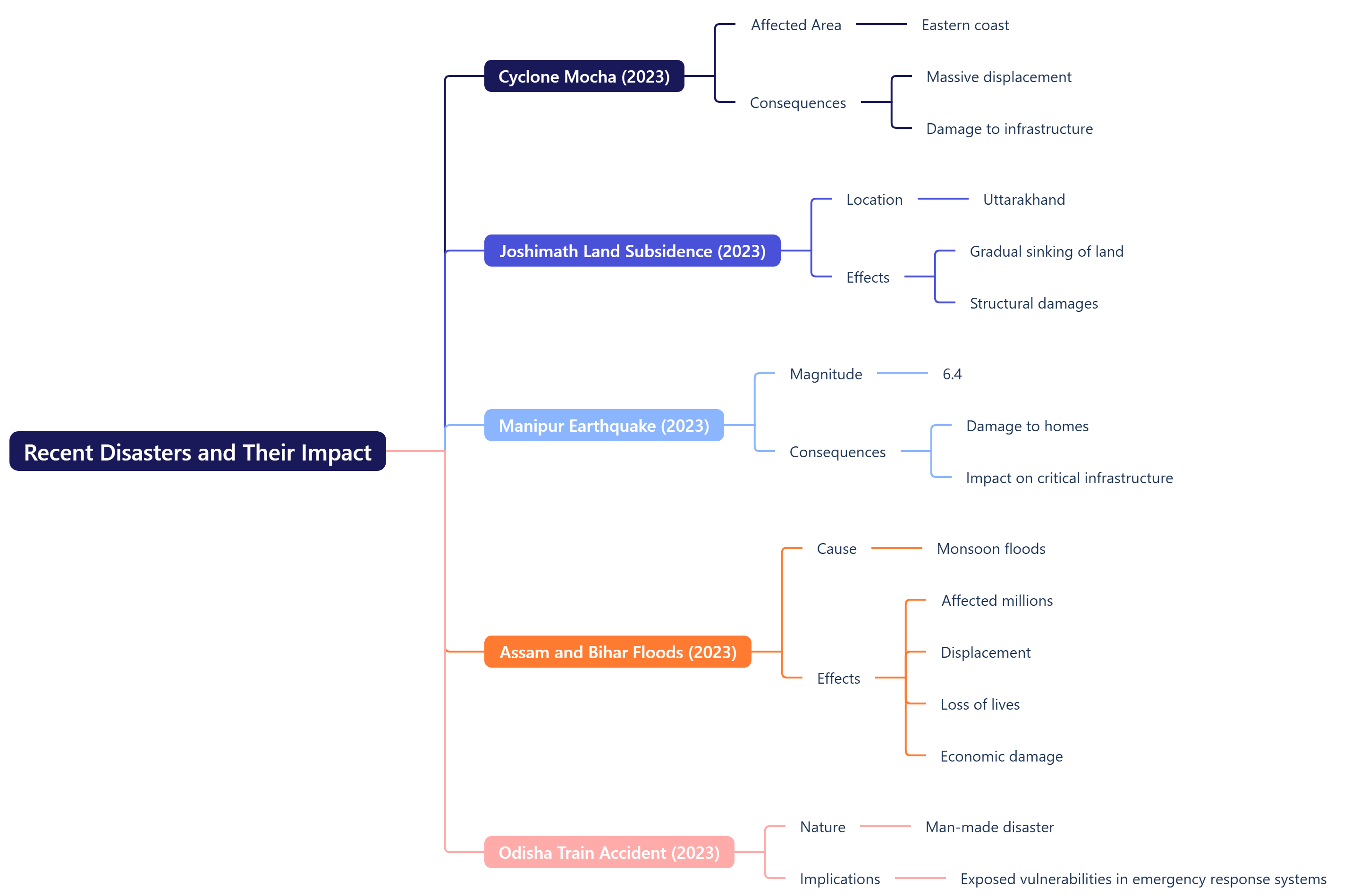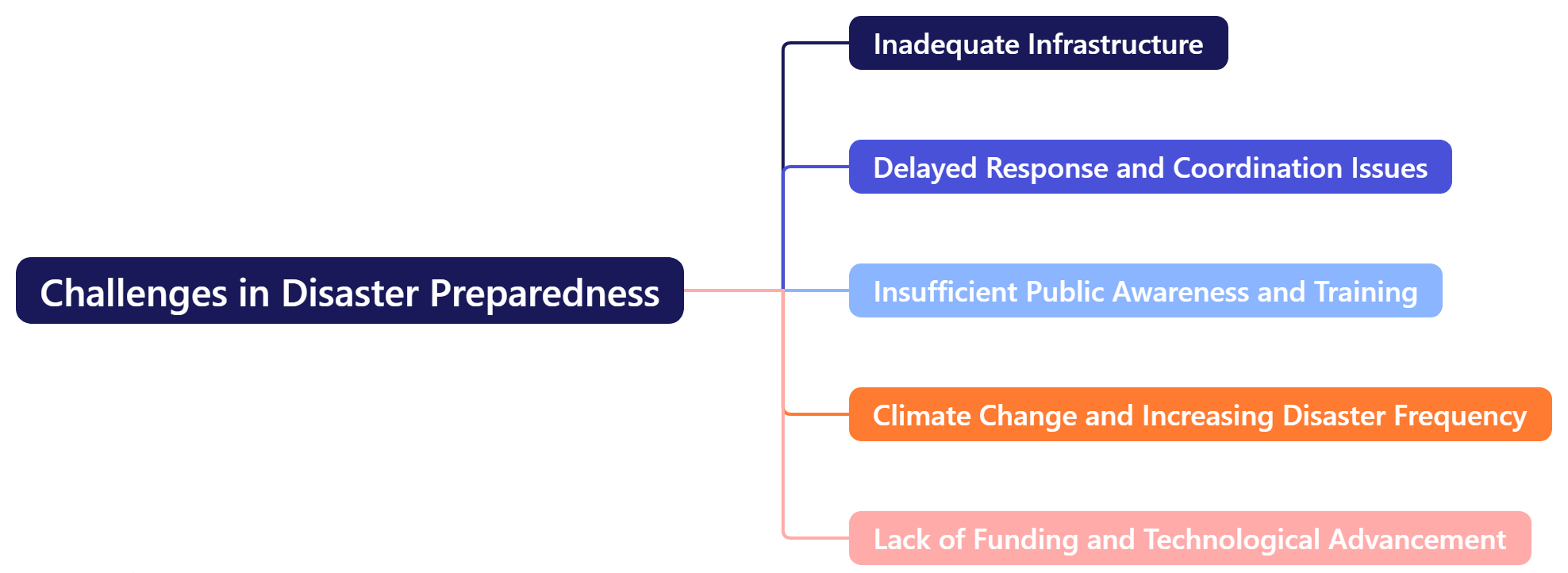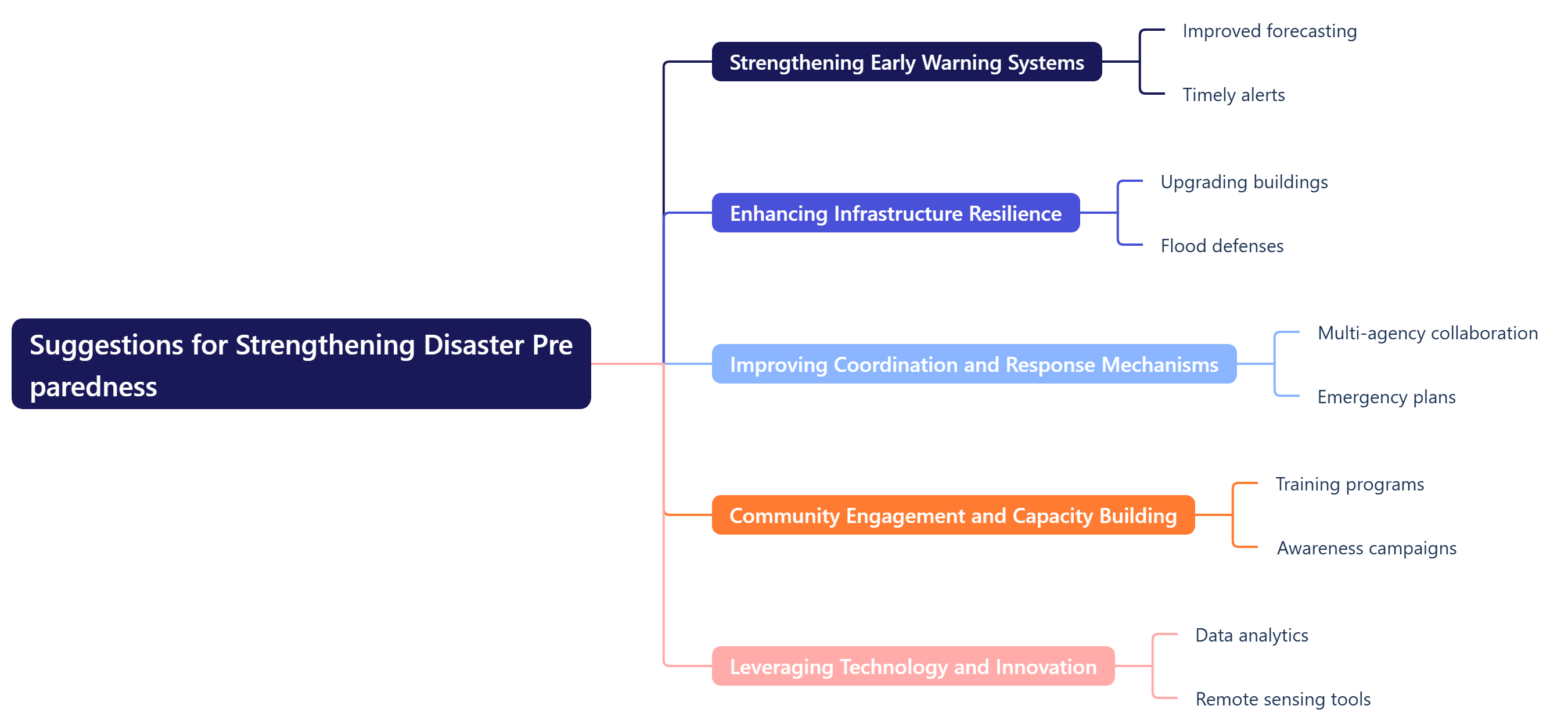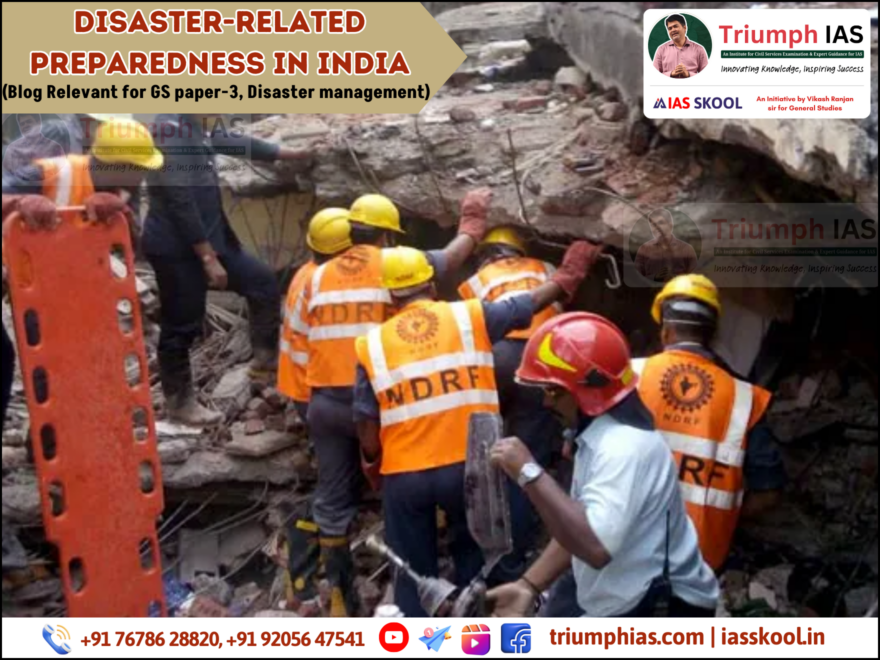Introduction
India is highly vulnerable to natural and man-made disasters due to its geographical diversity and dense population. The country faces a range of calamities, including earthquakes, floods, cyclones, landslides, droughts, and industrial accidents. In response, the government has developed a multi-tiered disaster management framework, focusing on mitigation, preparedness, response, and recovery. However, despite various initiatives, significant gaps remain in disaster preparedness, which need urgent attention.
Recent Disasters and Their Impact

India has experienced several disasters in recent years, highlighting the need for improved preparedness:
- Cyclone Mocha (2023): Affected the eastern coast, causing massive displacement and damage to infrastructure.
- Joshimath Land Subsidence (2023): A geological disaster in Uttarakhand, where gradual sinking of land led to structural damages.
- Manipur Earthquake (2023): Magnitude 6.4 earthquake caused damage to homes and critical infrastructure.
- Assam and Bihar Floods (2023): Monsoon floods affected millions, leading to displacement, loss of lives, and economic damage.
- Odisha Train Accident (2023): Although a man-made disaster, it exposed vulnerabilities in emergency response systems.
Disaster Preparedness Framework in India
India follows a structured approach to disaster management with policies and institutional frameworks.
- Institutional Mechanism
- National Disaster Management Authority (NDMA): Established under the Disaster Management Act, 2005, NDMA is responsible for formulating policies and ensuring effective disaster preparedness.
- State Disaster Management Authorities (SDMAs): Implement disaster preparedness plans at the state level.
- District Disaster Management Authorities (DDMAs): Handle local-level disaster response and preparedness efforts.
- Early Warning Systems
- Indian Meteorological Department (IMD): Issues alerts for cyclones, heatwaves, and heavy rainfall.
- Central Water Commission (CWC): Monitors river water levels and issues flood warnings.
- National Remote Sensing Centre (NRSC): Provides satellite-based data for disaster forecasting.
- Indian National Centre for Ocean Information Services (INCOIS): Issues tsunami and storm surge warnings.
- Disaster Response Forces and Infrastructure
- National Disaster Response Force (NDRF): A specialized unit trained to handle natural and man-made disasters.
- State Disaster Response Forces (SDRFs): Similar to NDRF but operate at the state level.
- Civil Defence & Home Guards: Assist in local disaster response efforts.
Challenges in Disaster Preparedness

Despite having a structured disaster management framework, several challenges persist:
- Inadequate Infrastructure
- Poorly constructed buildings, especially in earthquake-prone zones, increase the risk of damage.
- Drainage systems are often inadequate, worsening urban flooding.
- Delayed Response and Coordination Issues
- Lack of coordination between central, state, and local agencies results in delayed disaster response.
- Bureaucratic delays slow down relief distribution.
- Insufficient Public Awareness and Training
- Many citizens, especially in rural areas, lack awareness about disaster preparedness measures.
- Training programs for first responders and community volunteers are limited.
- Climate Change and Increasing Disaster Frequency
- Rising global temperatures contribute to the increasing frequency and intensity of floods, cyclones, and droughts.
- Unplanned urbanization and deforestation exacerbate landslides and flooding.
- Lack of Funding and Technological Advancement
- Investment in disaster mitigation and early warning systems is insufficient.
- Need for integrating AI, IoT, and big data analytics in disaster prediction and response is still underdeveloped.
Suggestions for Strengthening Disaster Preparedness

To enhance India’s disaster preparedness, the following measures should be implemented:
- Strengthening Early Warning Systems
- Invest in AI-driven forecasting models for better prediction of disasters.
- Expand real-time data collection from satellites, sensors, and weather monitoring stations.
- Enhancing Infrastructure Resilience
- Implement strict building codes in earthquake-prone areas.
- Develop climate-resilient infrastructure, including flood-resistant roads and houses.
- Strengthen urban drainage and water management systems.
- Improving Coordination and Response Mechanisms
- Establish a unified command structure for disaster response.
- Improve inter-agency coordination through digital platforms.
- Ensure faster allocation of disaster relief funds to affected regions.
- Community Engagement and Capacity Building
- Conduct regular disaster preparedness drills in schools, offices, and residential communities.
- Include disaster preparedness education in school curricula.
- Train local communities and volunteers in first aid and emergency response.
- Leveraging Technology and Innovation
- Deploy drones for real-time damage assessment and rescue operations.
- Use GIS mapping for identifying high-risk zones and planning evacuation routes.
- Develop mobile apps to provide real-time disaster alerts and safety guidelines.
Conclusion
India has made commendable progress in disaster preparedness, but there is still a long way to go. Strengthening early warning systems, improving infrastructure resilience, enhancing response coordination, and leveraging technology are critical for minimizing disaster risks. A proactive approach involving government agencies, private sectors, and local communities can make India more resilient to disasters, ensuring better protection of lives and livelihoods.
|




